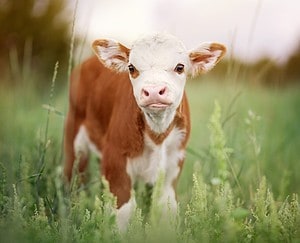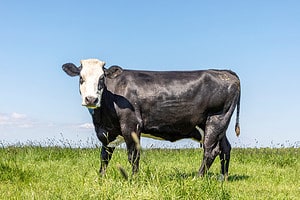Do all cows have horns? The common understanding is male cattle, called bulls, have horns. Female cattle, called cows, do not have horns. However, the truth about cows and their horns is a little more complicated than this. To truly understand modern cattle horns, you have to know where today’s cattle originated. The earliest known bovine fossils date to 11 million years ago. This bovine line evolved with variations, eventually becoming the cattle, oxen, buffalo, goats, and sheep that we recognize today. These early cattle are called aurochs. Aurochs fossils have been found in India, Europe, and North Africa.
Both male and female aurochs grew broad, wide horns that curved in on the end. Female aurochs were slightly smaller than males, and therefore, had slightly smaller horns. Aurochs were first domesticated and bred for farming and milk over 10,000 years ago. Selective breeding during this process produced animals with heavier bodies, shorter legs, and greater milk production. Did selective breeding remove the horns from female cows?
Why Do Cows Have Horns?
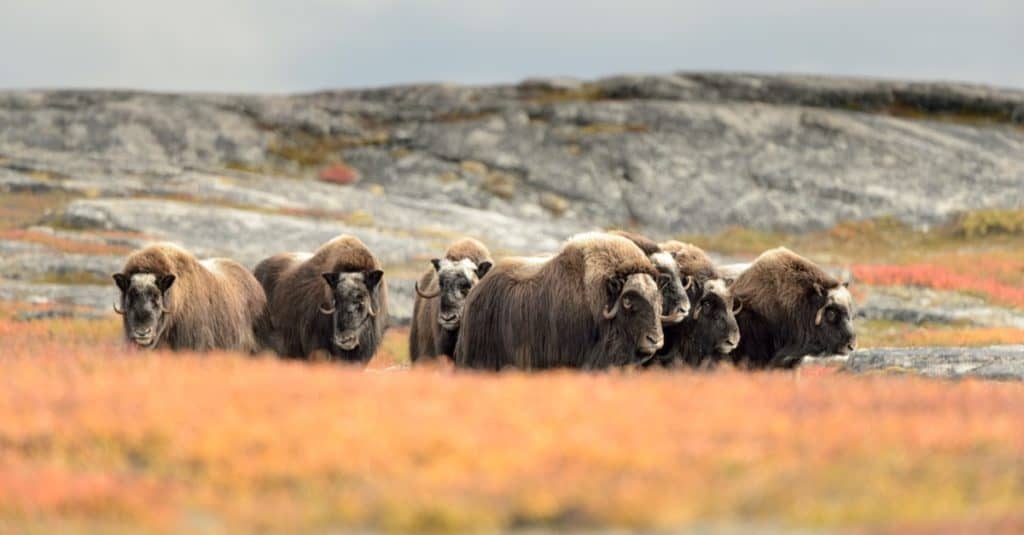
In the wild, female and male members of the bovine family grow horns.
©NaturesMomentsuk/Shutterstock.com
The prevailing theory on why cows have horns is that horns are vital for self-protection. As cattle are large, slow-moving land mammals, they were vulnerable to faster predators as they migrated across the land in search of food and water. Horns provided vital defense against attacks. Today, both male and female wild bovine breeds grow horns. This is readily apparent in the female Musk Oxen, which grow long, sloped horns. Musk Oxen will form circles around their calves in the wild as a defensive measure. They use their horns to ward off attacks while in these groups.
Unlike deer, cattle do not shed their horns every season. Cows also cannot regrow their horns. If a cow experiences breakage to its horn, the horn will remain damaged. Conversely, cattle’s horns never stop growing. Made of bone, horns typically grow with cattle until they are adults, then slow their rate of growth dramatically. For the rest of the cattle’s adult life, the horns will continue growing, but at a nearly imperceptible rate. Horns are connected to the skull through a network of blood, tissue, and nerves. Damage to fully developed horns on cows causes extreme pain and bleeding.
Why Are Female Cows Hornless?
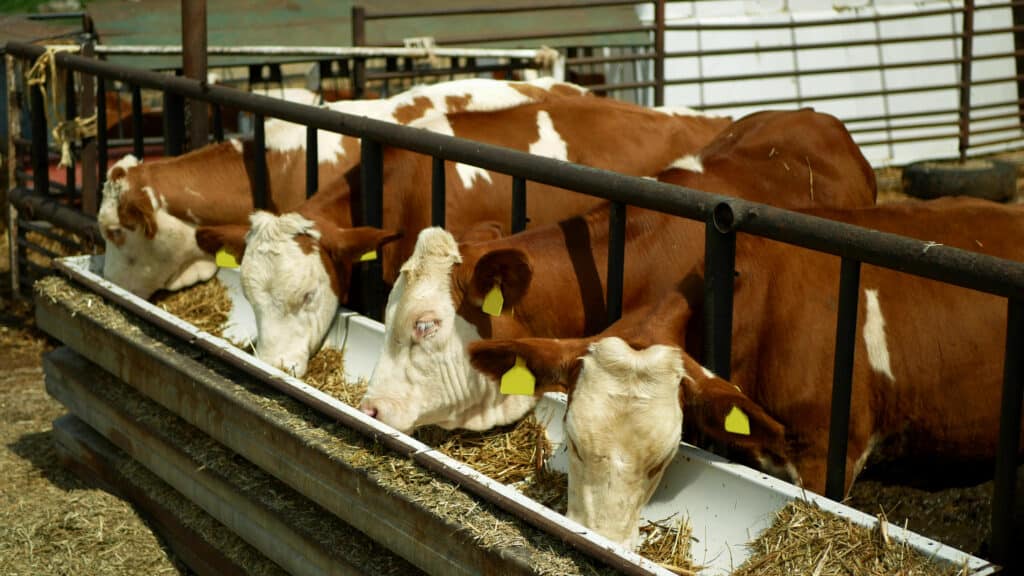
Cattle ranchers dehorn cows soon after birth.
©Tomas Vynical/Shutterstock.com
Both male and female calves are born with horn buds. Within a few months of life, the horn bud begins to merge with the skull bone of the calf. By the time the calf is a year old, the horn bud and the skull will have fused completely, and horns will begin to grow.
For safety reasons, most farmers choose to dehorn their cows. Cows are often housed in groups on dairy farms. Fighting between cows that still retain horns may lead to serious injury. Cows with horns may also present a safety hazard for farm workers. The process of dehorning a calf is simple. The horn bud is a small, soft lump of tissue on the calf’s head, under the skin and fur. Horn buds have not fused and are easily moved around the skull. Cattle farmers either use special tools to cauterize, or burn, the tissue and therefore prevent growth, or caustic materials. Generally, the calf will heal in several weeks, and horns will never form. As this procedure is time-consuming and potentially risky for cattle, ranchers have been pursuing alternative solutions to removing horns.
Selective Breeding is Removing Horns From Dairy Cows
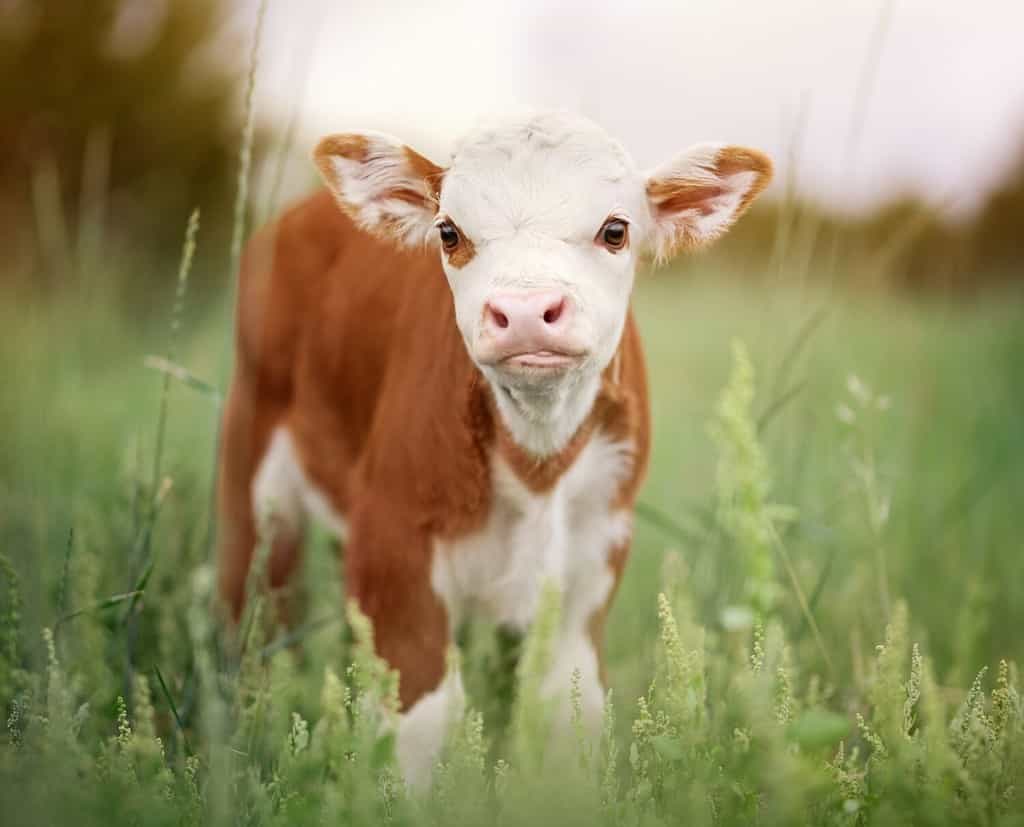
Some cattle are born missing the gene that causes horns to grow.
©KatieDamonPhoto/Shutterstock.com
Some cattle are lacking the necessary gene to grow horns. A natural variation created an allele, or a different version, of the genes responsible for horn growth. Cattle that are born with this allele, called polled cattle, do not grow horns. Upon the emergence of polled cattle, ranchers began to attempt to breed more hornless cows. Careful selection of polled cattle leads to an increase in naturally hornless cows.
Today, genetic testing is available at relatively inexpensive prices to help ensure success at breeding hornless cows. Cattle brokers test their cows before selling them to ranchers, while ranchers test their newborn calves. Scientists are perfecting gene-splicing techniques that would allow cattle to be bred without horns even if their original genes contribute to horn growth. These methods have been successful in isolating the hornless gene, but the technique is not widely accepted.
Naturally Hornless Cows

Angus cattle are one of the many naturally hornless breeds.
©Nordroden/Shutterstock.com
Through selective breeding, 33 different types of cattle are naturally hornless. Of these, the Galloway is one of the oldest breeds of polled cattle. The first exportations of Galloway cattle to the United States from Scotland occurred in the 1850s. The ease of caring for these cattle was an attractive feature for cattle ranchers. Today, nearly all of the Galloway cattle are born without horns. An easy-going, high milk-producing cow, the Galloway is a midsized cow. Cattle ranchers have worked to maintain the genetic integrity of the breed, and most Galloway cattle today are very similar to the first imports.
Horns are the Desired Trait for Some Cattle Breeds

While some farmers are attempting to breed horns out, others are selecting cows with the best horns.
©iStock.com/RAUL RODRIGUEZ
The Texas Longhorn, Highland Cattle, and Ankole Watusi are all bred to produce beautiful, strong, and large horns. Used in decorative arts, cattle horns themselves have value. Prehistoric humans used cattle horns, which are hollow, as containers for water, food, and other necessities. Carved cattle horns were used in decoration or storytelling. Today, cattle horns find their way into furniture, silverware handles, home decor, and jewelry. Less attractive cow horns find use as pet treats and dog chews.
Will Cows Have Horns in the Future?
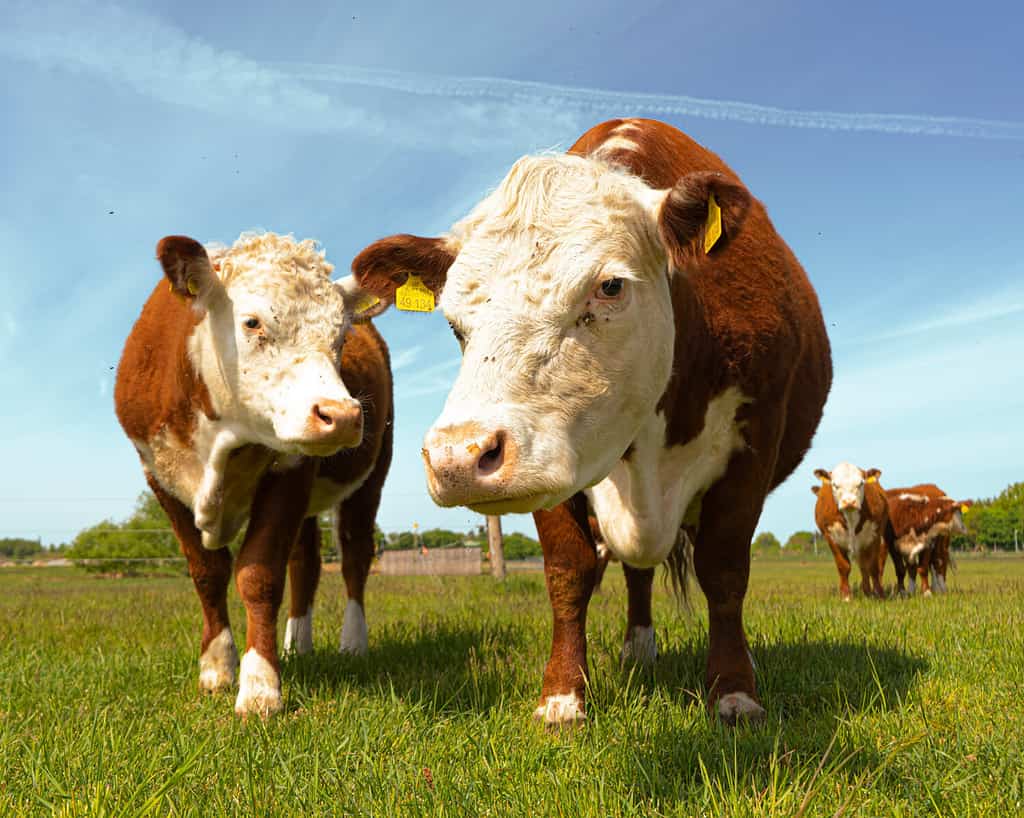
Hereford cows originate from Herefordshire England. In the future, cows may be born without horns.
©247 FILM/Shutterstock.com
Surprisingly, the gene that leads to hornless cattle is dominant. Breeding two cows, one with the hornless gene and one without, is more likely to produce polled offspring. Further, these cows may still carry the genetic mutation that causes no horns as a recessive trait. If two parents with the same recessive trait have a child, the recessive trait may become dominant. Breeding cows to produce polled offspring produces more calves that carry the gene. In the future, they may breed with other cows that also carry the recessive trait, which would eventually lead to all cows carrying the hornless gene. Consequently, the only cows that will have horns in the future may be the result of selective breeding.
The photo featured at the top of this post is © pelvidge/iStock via Getty Images
Thank you for reading! Have some feedback for us? Contact the AZ Animals editorial team.



